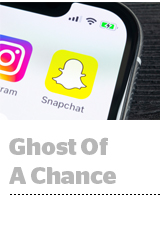
Snap’s revenue grew 44% year over year to $262 million in the second quarter. Its average revenue per user – a critical metric where Snapchat lags behind Facebook and Instagram – increased 34% to $1.40 in Q2.
Snapchat’s transition to self-serve programmatic has allowed the company to scale its ad business in ways that weren’t possible as a direct sales organization, said co-founder and CEO Evan Spiegel.
But despite the positive gains, all is not well at Snap.
For the first time, Snapchat’s daily active user (DAU) count decreased quarter over quarter. Snapchat’s Q1 daily users totaled roughly 191 million, compared to 188 million daily users in Q2.
Snapchat has struggled to grow its DAUs this year in light of its unpopular app redesign – and subsequent re-redesign.
There are encouraging leading indicators of user growth, such as improved retention rates among users older than 35, Spiegel insisted – but the company repeatedly declined to issue further guidance on quarter-to-quarter DAU expectations.
Yet, there is also reason to believe Snapchat’s programmatic turnaround is improving its monetization.
Snapchat successfully transitioned Story Ads from a managed service to a self-serve programmatic auction. The company now transacts 75% of its ad revenue programmatically, up from 18% at this time last year, said CFO Tim Stone.
And the Snap Pixel, which allows advertisers measure the cross-device impact of campaigns and has been in beta since late last year, is finally picking up steam, the company noted in its earnings release.
Adoption of the Snap Pixel also reinvigorates the company’s new Custom Audience targeting solution. Using the pixel, Snap can connect impressions to purchases on a brand’s or retailer’s site to understand which ads drove conversions, said Imran Khan, Snapchat’s chief strategy officer.
Investors were anxious, however, about the possible side effects of programmatic, like whether Snapchat’s falling CPMs would hit a bottom and then bounce back up.
Khan said that the 52% decline in year-over-year inventory prices has actually helped the company demonstrate strong ROI, and despite the short-term revenue drag will eventually attract more advertisers and improve the overall auction dynamics.
Snap shares jumped in after-hours trading on the company’s better-than-expected revenue.
This post was syndicated from Ad Exchanger.


More Stories
Home Sweet Home: Contact Energy’s green vision for Aotearoa
Brands Like Sweetgreen Are Wrestling With Google Search’s Growing Complexity
Stuff and WBD partner to redefine 6PM news